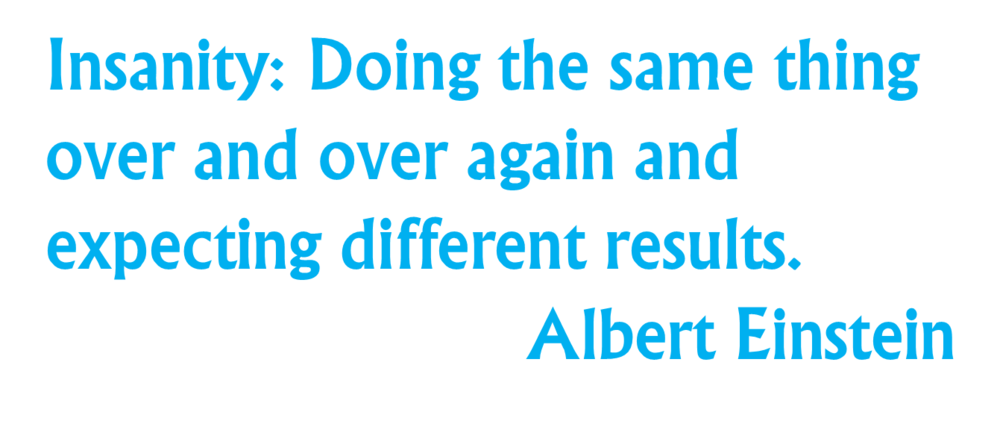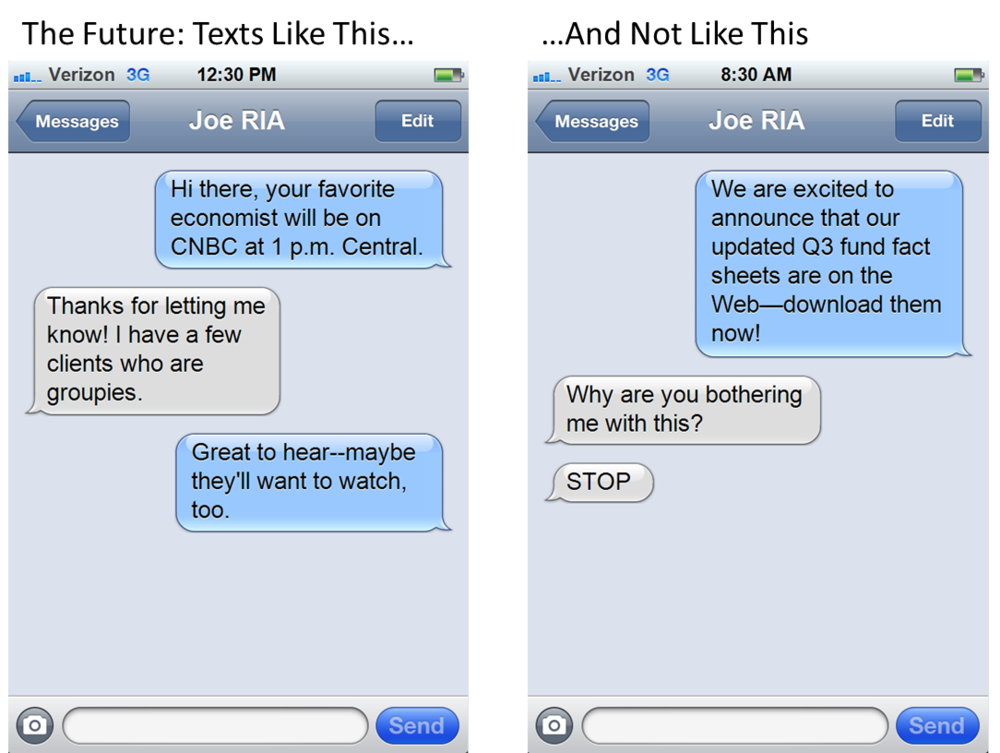What To Give The Mutual Fund, ETF Marketer—9 Elf-perts Weigh In
/ TweetNow that the day of giving thanks is a distant memory and you’ve managed to score a few Black Friday/Cyber Monday bargains to give as holiday gifts, let’s talk about you. Specifically, what to give you, the mutual fund or exchange-traded fund (ETF) marketer this holiday.
Oh, sure, I could stuff a stocking for you. I’d pack it with thousands more YouTube video views, hundreds more email subscribers, dozens more Webinar attendees and a healthy dose of ambition for all that has to get accomplished in 2015.
But that’s the small stuff. To make it a memorable year for you, I organized a small Gift Ideas for Investment Marketers crowdsourcing project.
“And what gift would you give a fund company marketer?” I asked a panel of merry elves hand-picked for their relevance and because I consider them experts in our world at large (sorry about the elf-pert mash-up, it couldn't be avoided). Feel free to put your tongue in your rosy cheeks, I added in my note although not in so many words.
The result, below, is so not the gift guide for someone who has everything. The asset management marketer doesn’t have enough of anything—there’s never enough time, money or resources to deliver what management, Investment Management, Sales, Sales Support and consultants want.
But, let’s suspend belief for a moment...Pour a cup of hot chocolate, turn the volume down on your computer (there’s one video that’s not completely safe for work) and let’s open these gifts.
Note: It’s been said that a gift says more about the giver, and there is definitely some of that in these. Suffice it to say that marketers’ self-improvement is the contributors' overall theme. You’re going to have to get your sugarplums from some other group.
New, Improved Clients
From Tom Brakke (@researchpuzzler), CFA, consultant, writer and investment advisor who frequently comments on asset management marketing on his The Research Puzzle blog. Tom’s Letters to a Young Analyst, which I blogged about in March, would also make a fine gift for an investment marketing team.
"I'd like to give investment marketers a new group of clients [financial advisors] that will make their lives harder, but more rewarding, during 2015.
"Of course, getting a number of incremental clients would be a bonus, but I'm really talking about current clients changing how they make decisions, specifically by abandoning the near-universal tendency to chase performance. As it is, performance trumps everything, and marketers ride the ebbs and flows of performance-driven choices. (It must be tiring to bob around in that ocean, unless you have been "hanging ten" for a long time on top of a nice wave and have forgotten what it's like to fall off.)
"However, the 'harder' part that I mentioned is that devoid of the performance driver, clients would have to dig deeper to understand what's really going on at an asset management firm. That means getting beyond the pat descriptions of investment process and 'smart people' to see the messiness of the organization intersecting with markets. The reality of it, rather than a stylized model of it.
"More demanding clients would make for tougher, but more interesting, days for marketers. And, the chance for the best to shine in a whole new way."
Better Social Media Analytics
From Blane Warrene (@blano), founder of the Arkovi social media archiving solution (now RegEd), co-host of the Digital Well podcast, editor-at-large for TheDigitalFA and speaker and advisor on financial technology.
“An area I've been exploring is finding more context in the use of social media. From my perspective, that reaches beyond the standard analytics. For example, a normal dashboard looks for engagement and then maps that to the possible influence and reach of those who are connected with your digital properties.
“I would put two new tools in the asset manager marketer's toolbox: ThinkUp and SumAll.
"ThinkUp uses a more plain English approach to giving you a view into daily interaction with your content. I also like the time shifting reporting—looking back and reminding you of what's worked in the past.
“SumAll is analytics 2.0 to me. Giving you the ability to combine and overlay metrics you might not have thought of or been able to do in the past. One example would be connecting statistics on social advertising with organic content marketing to evaluate the value of social ad dollars.”
Study Up On What Not To Do
From Lawrence P. Stadulis, Esquire, Stradley Ronon Stevens & Young, LLP, a specialist in “matters pertaining to the registration and regulation of investment advisers and investment companies under federal and state securities laws.” Every once in a while, I ping Larry with a completely random (for him) question regarding FINRA or Compliance and he’s been good enough to set me straight.
“How about a copy of that timeless and informative tome, How to Lie with Charts, by Gerald Everett Jones?
"I recognize that most folks tend to have a pretty good handle on this aspect of marketing so it might seem a bit boring at first. But I promise you that this book is positively loaded with invaluable tips and techniques to create the most misleading marketing piece possible and draw the admiration and attention of regulators, such as the SEC."
Marketing Survival Kit
From Rob Shore (@shorespeak), wholesaler training and coach of WholesalerMasterminds.com and an inveterate salesman, as you'll see in his gift. :)
"Created by recent graduates of a 12-step financial services marketing intervention program, and specifically designed for the home office marketer, this kit contains everything you need to improve the chances of your wholesalers emerging from group meetings victorious in both the message of the firm and furtherance of their brand in the field.
"Inside this kit you'll find:
- slide:ology: The Art and Science of Creating Great Presentations by Nancy Duarte so that you never again create slides for your sales team that contain 14-point type, charts that simply can't be read by audience members, and graphics that do nothing to support or enhance the story your wholesalers are trying to convey.
- Wholesaler Masterminds Email Clinic so now you can craft emails that get opened, read and acted upon versus the mountain of product-pushing pseudo spam that is generated each day by well intending marketers across the land.
- Presentation Zen by Garr Reynolds for the marketer who wants to up his game using Garr's fresh approach, which has inspired millions to communicate more clearly, creatively, and visually.
"And, if you order before the next National Sales Meeting, we'll include Tequila of The Month Club to cope with the endless deadlines, demands and irrational requests of the internal clients that you serve every day.
"The Sales Force Marketing Wholesaler Survival Kit from ROBCO, because talented folks and sizable budgets don't always mean a great end product."
When You Need A Knowledge Boost
From a real, live (follow his @iamreff Twitter feed for action shots) fund company marketer: John Refford, Vice President, Strategic Marketing Technology, Natixis Global Asset Management – U.S. Distribution
"You’re a busy digital marketer, always asked to do more with less. What you need is a knowledge robot.
"Imagine you’re working on launching that fixed-income email campaign…but wait…you need to know how many teaspoons are in a tablespoon, and you’re just too darned busy to pull your phone out of your pocket! Noooo problem. Amazon Echo to the rescue!"
How About Paying Attention To Where Your Ad Budget Is Going?
What I appreciate about this next contribution is that Brooke Southall, managing principal and reporter of RIABiz.com and @RIABiz, has his own platform and access to conceivably millions more readers. But here he's sharing a very targeted perspective for those of you who are outsourcing/offloading your media decisions. My broad exposure to advertising analytics after the fact leads me to believe that these comments have value beyond RIABiz' self-interest.
“With a large red bow I would like to present to asset management marketers a bottle of Tylenol—not for any headache they have now. It is for the one I would think they should court in 2015 by rethinking their strategy.
“Asset managers, with a few exceptions like T. Rowe Price, Invesco and Fidelity Investments, have used a low-neuron method of attracting new investors to their products—reserving larger lobes of the corporate mind for investing. Marketing has been treated as a necessary evil. This harsh assessment comes from our perspective of selling advertising to this constituency—often through the third parties hired by the asset managers.
“The prototype at these third-party firms is a 26-year-old who is at pains to be dealing with a business-to-business publication when the sexy, millennial thing to do is to work on consumer products. Their interest in financial wares or how they flow to investors is very low.
Understanding the difference between an RIA and a broker is not something a third-party ad agency will strain their mind to understand.
They know the client will be wowed by creative output and flash and numbers and "deliverables"—even if only illusory ones. In the online world, there is no reward system to that third party for the handful of super clicks an advertisement receives from the managers of large pools of money, i.e., billions in assets.
“Often enough an asset manager simply gets a list of publications and applies dollars across the board—rewarding the lowliest publications with higher buys because the pageviews are dirt cheap.
“This tendency is truly unique to the asset management industry. People who cross over to a trade publication that covers investment managers from, say an aeronautics trade publication, are dumbfounded by the lack of care applied to the spending of these precious marketing dollars. The ultimate proof they see in the advice industry is that there has never been a shakeout of the dozens of websites and print publications that serve financial advisors—though many of them are a shadow of their former selves because of a diminishing value proposition.
“I can only conclude that this confounding marketing practice of giving final discretion of dollars spent to uninformed outsiders, like other tendencies that come across as nonsensical, can be attributed to the residue of a culture of privilege.
“Asset management has enjoyed one of the great business models of the past 30 years—with high profit margins and terrific scalability. It has also existed in a very static world of distribution whereby stockbrokers held sway and acted in predictable ways.
“But with RIAs or quasi-RIAs supplanting brokers and asset managers squeezed by ETFs and a proliferation of other asset managers, the need to market like your lives depend on it has come to the fore. This is only complicated by print publications fading as online publications take up the slack. Telecommunications companies eventually learned that you can't trust local phone companies to handle cable quality from the trunk lines at the telephone pole across the yard to the living room. Marketers of investment management could pay greater attention, too, to who sees their marketing by concentrating on this 'final mile'.”
You Can't Afford Cold Feet
And now let's hear from Leslie Marshall (@LeslieAMarshall), Director - Events, Magazine and Social Media, Morningstar Inc., who can always be counted on to lighten up a room.
"For 2015, I would like to make sure my fellow #finserv #funserv marketers stay warm…with socks—the more colorful the better! With early cold temperatures, we can’t stay on our toes and think of fresh social media ideas and ways to work with Compliance if we have cold feet.
"To capture ideas and inspiration, I also love to give paper-based notebooks or agendas. Old-school? Sure. But there’s still something inspiring about putting pen to paper. In pure social media style, I found these on Pinterest: Kate Spade Bella Bookshelf and Replace the Fear of the Unknown with Curiosity.
"Here’s to an inspired new year!"
Financial Jargon Fighter
From Susan Weiner (@susanweiner and one of my anchors on Twitter), writer-editor and chartered financial analyst (CFA) “who helps financial professionals increase the impact of their writing on clients and prospects.” You can follow her thoughts on her InvestmentWriting blog, her @susanweiner Twitter account and in her Financial Blogging: How To Write Powerful Posts That Attract Clients book.
"Investment marketers want to do the right thing. They want to use language that's easy for readers to understand. After all, that boosts the impact of their communications. But sometimes it's difficult for marketers to detect financial jargon. Or maybe they can't think of plain language to explain complex concepts.
"My recommended gift is Financial Jargon Fighter (FJF) software. Unfortunately, it exists only in my mind. However, the ideal product would go beyond identifying jargon. It would also suggest wording that satisfies even persnickety portfolio managers. Perhaps it could tap the mind of Berkshire Hathaway’s Warren Buffett, one of the industry’s most influential advocates of plain language.
"Until an FJF is commercially available, impatient gift givers can seek a living, breathing Financial Jargon Fighter. A member of the marketers’ target audience can give invaluable feedback on communications. Marketers will get the most mileage out of these folks if they ask, 'Please explain my main point in your own words' to test reader understanding. Otherwise, their readers will parrot the marketers’ words back at them.
"Also, free tools, such as HemingwayApp.com and the SEC’s A Plain English Handbook: How to create clear SEC disclosure documents, may help to identify jargon and other bad writing habits."
Harmony, Peace And Some Stretching
With this contribution, Back Porch Vista Chief Marketing Officer Jeremy Floyd makes his debut on the Rock The Boat Marketing blog. In the spirit of his message, here are both his Twitter and LinkedIn accounts.
"If I had one wish that I could wish this holiday season, it would be for all themarketing and sales departments of the world to join hands and sing together in the spirit of harmony and peace.
If you proceed to YouTube to watch this video (not embeddable), now would be a good time to turn down the volume on your computer.
"Maybe that’s a bit much, but in Steve Martin’s holiday wish is a nugget of truth: we need to connect. Our role as marketers in this space demands that weconnectwith our clients, customers, investors, and most importantly our internal alignment. So, my gift to a fellow marketer is abook, the courage to carry the message, and the imagination to tell our stories in new and creative ways.
"I'd give David Meerman Scott’s newest book,The New Rules of Sales and Service, because in 2015 we must see sales and marketing sing in perfect harmony. Success will require 'stretch' on both sides. As marketers, we have to embrace our role as technologists, marketers and community managers, and we have to 'join hands' with our sales departments to recast the vision of our departments within the business. Cheers!"
My thanks to these contributors who've given us a lot to think about. While you do that, I'll be back the week of December 15 with the final post of 2014—my annual roundup of the best of the year.





















